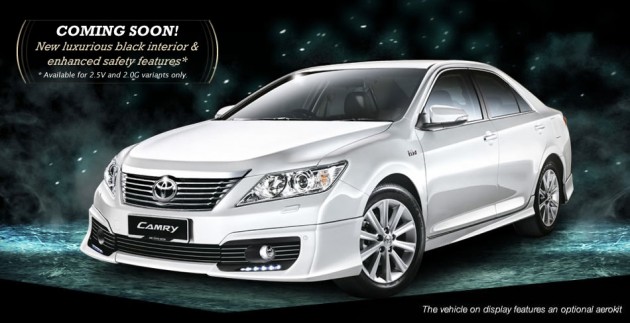Good news for Toyota fans! UMW Toyota will be updating the specs of the 2013 Toyota Camry offering to include Vehicle Stability Control (VSC) and Traction Control (TRC) in the mid-range 2.0G and top-end 2.5V models. The most affordable 2.0E basic model will continue without it.
VSC is Toyota’s brand name for electronic stability control. Electronic stability control essentially uses sensors and brakes to help stabilise your car in a situation where you might normally spin out of control. We’ve stressed on the importance of safety features like VSC before, in a length story published in 2012.
If you have not read our story, I suggest you go read it and spread the word to your friends and family to help them be more aware about this important safety feature, so they can look out for it when it comes to their next car purchase. The story includes videos and infographics to explain how the feature works.
LINK: ESP Stability Control is a must – Malaysian motorists deserve better active safety in our cars
So now when the Camry 2.0G and 2.5V with this added feature rolls out, it can be included in your list of cars to consider if you value the inclusion of electronic stability control in a car’s equipment list. The teaser image also shows that the 2.0G and 2.5V will be available with a black interior.
The improved Toyota Camry 2.0G will go for RM158,915.30, which is an RM1,015.30 premium over the model without ESP. Other than VSC, it also adds keyless entry and start, a feature previously only available on the 2.5V.
The improved Toyota Camry 2.5V will go for RM180,917.10, a mark-up of RM17.10 for the addition of VSC, which is a very small price to pay indeed.
Interestingly the 2.0E model has also had a tiny price hike – it was launched at RM149,900 and is now priced at RM149,915.30.
Looking to sell your car? Sell it with Carro.






























AI-generated Summary ✨
Comments express mixed sentiments regarding the addition of VSC to the 2013 Toyota Camry, with many praising UMW for finally installing this safety feature previously missing from Malaysian models. Some feel UMW is responding to online pressure and condemn the initial omission, accusing Toyota of prioritizing profits over safety. Others criticize the car’s outdated design and high pricing, believing it’s overvalued relative to competitors or its safety features. A few comments highlight concerns about Toyota’s corporate ethics, price hikes, and lack of standard safety equipment, while some readers view this move as a positive step towards better safety standards. Overall, the tone is a mix of cautious approval, frustration with pricing and features, and skepticism about Toyota’s motives.